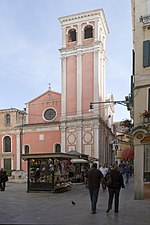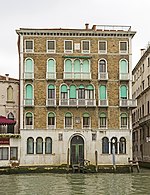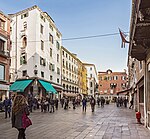Santa Maria dei Miracoli, Venice
15th-century Roman Catholic church buildings in ItalyRenaissance architecture in VeniceRoman Catholic churches completed in 1489Roman Catholic churches in Venice

Santa Maria dei Miracoli is a church in the sestiere of Cannaregio, in Venice, Italy.
Excerpt from the Wikipedia article Santa Maria dei Miracoli, Venice (License: CC BY-SA 3.0, Authors, Images).Santa Maria dei Miracoli, Venice
Campo dei Miracoli, Venice Venezia-Murano-Burano
Geographical coordinates (GPS) Address External links Nearby Places Show on map
Geographical coordinates (GPS)
| Latitude | Longitude |
|---|---|
| N 45.439444444444 ° | E 12.339166666667 ° |
Address
Chiesa di Santa Maria dei Miracoli
Campo dei Miracoli
30170 Venice, Venezia-Murano-Burano
Veneto, Italy
Open on Google Maps











